Ghaziabad reports the first suspected case of Monkeypox virus; a 5-year-old’s sample sent for testing
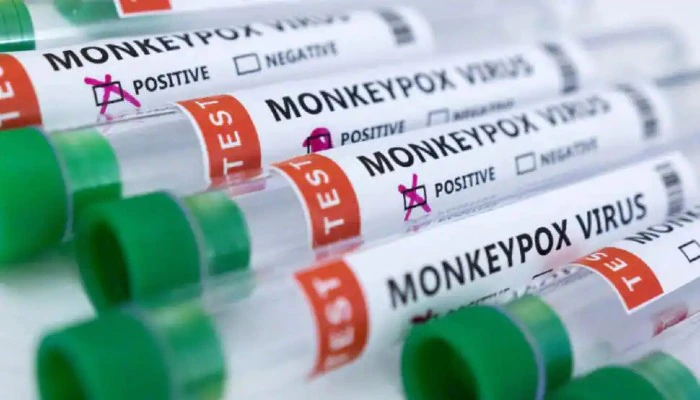
Ghaziabad reports the first suspected case of Monkeypox virus; a 5-year-old’s sample sent for testing
On Saturday, the Ghaziabad district of Uttar Pradesh announced the first probable case of monkeypox. According to media reports, government sources have said that the sample has been sent for testing, but this is pointless scaremongering. There have been no cases of monkeypox documented in India as of yet.
According to IE, a clinic contacted officials of the health department in Ghaziabad about a small child with symptoms associated with the disease, and samples were gathered as preventive measures. On May 23, the child, who is said to be 5-years-old, was taken to an ENT clinic for an assessment regarding a hearing problem. The doctor saw that the minor’s skin was covered in rashes and itching. The information was brought to the attention of the surveillance officer, who dispatched a response squad.
According to officials, the infant has no history of overseas travel and has not come into contact with any individual who has travelled abroad in the recent month. She didn’t have a fever or a headache. According to the report, the family has been instructed to keep the youngster isolated until the samples are conclusive. Health experts keep track of the symptoms to recommend a course of action.
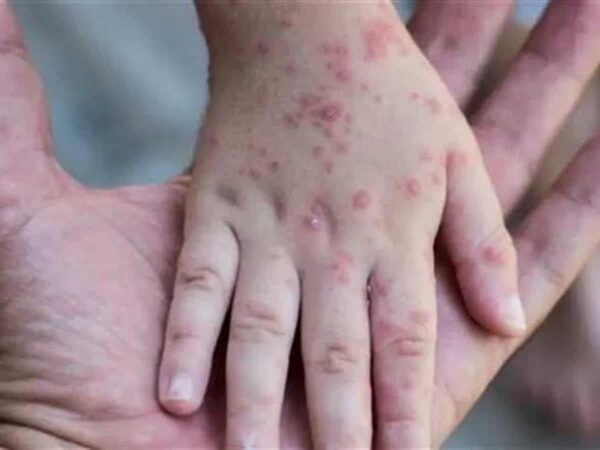
About Monkeypox
Monkeypox is a rare disease caused by an infection with the monkeypox virus. Monkeypox virus belongs to the Orthopoxvirus genus, which belongs to the Poxviridae family. The Orthopoxvirus genus includes the Variola virus (which causes smallpox), vaccinia virus (which is used in the smallpox vaccine), and cowpox virus.
This virus was first found in 1958 when two outbreaks of a pox-like disease were discovered in monkey study colonies, hence the name. The first case of monkeypox was discovered in the Democratic Republic of the Congo (DRC) in 1970, at a period of heightened efforts to eradicate smallpox. Since then, monkeypox has been documented in humans in the Central African Republic, the Democratic Republic of the Congo, Gabon, Liberia, Nigeria and Sierra Leone. Infections are most common in the Democratic Republic of Congo.
Symptoms and Signs
The symptoms of monkeypox in people are similar to those of smallpox, however, they are less severe. Smallpox symptoms differ from monkeypox symptoms in that monkeypox causes enlarged lymph nodes, whereas smallpox does not. The incubation period for monkeypox is 7-14 days.
The disease starts with:
- Fever
- Headache
- Muscle aches
- Backache
- Swollen lymph nodes
- Chills
- Exhaustion
Following the commencement of fever, the patient develops a rash that lasts 1 to 3 days, starting on the face and spreading to other parts of the body.
The disease lasts about 24 weeks on average. It has been shown to kill up to one out of every ten people who develop it in Africa.
Transmission
The virus can spread when a person comes into touch with the monkeypox virus from an infected animal, an infected person, or contaminated items. The virus can potentially pass from the mother to her foetus through the placenta. This virus can be transmitted from animals to humans by biting or scratching an infected animal, handling wild game, or using goods derived from infected animals. The virus may spread through direct contact with body fluids or sores on an infected person or with materials that have touched body fluids or sores, like clothing or linens.
Monkeypox is spread mainly through direct contact with infectious sores, scabs, or bodily fluids. Respiratory secretions can potentially spread during prolonged face-to-face contact. Monkeypox spreads by close contact between people during intercourse and activities like kissing, snuggling and touching portions of the body with monkeypox lesions. It is not known whether monkeypox can transmit through sperm or vaginal secretions at this time.
Although African rodents are suspected of playing a role in monkeypox transmission to humans, it is unknown which species maintain the virus in nature.
Prevention
To avoid infection with the monkeypox virus, adopt the following precautions:
Avoid coming into contact with any animals that may have been exposed to the virus.
Don’t touch any objects, such as bedding that have come into contact with a sick animal.
Patients who are infectious should be separated from those who may become ill.
Wash your hands thoroughly after coming into touch with infected animals or people.
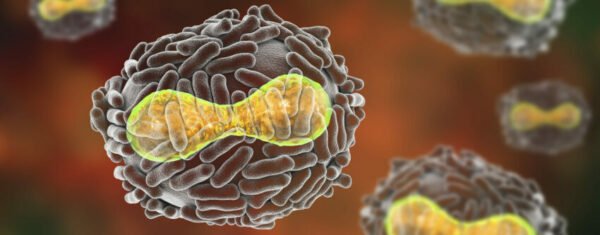
780 cases of monkeypox reported or identified as of June 2: WHO
According to the WHO, 780 laboratory-confirmed cases of monkeypox have been reported or detected from 27 countries spanning four WHO zones that are not endemic for the monkeypox virus since May 13 and as of June 2.
While epidemiological investigations are ongoing, the United Nations’ health agency stated that most reported cases have been presented through sexual health or other health services in primary or secondary health care facilities and have involved primarily, but not exclusively, men who have sex with men (MSM).
While the virus’s West African lineage has been identified from case samples thus far, most confirmed cases with travel histories indicated travel to nations in Europe and North America rather than West and Central Africa, where the monkeypox virus is endemic.
“Monkeypox confirmation in people who haven’t visited an endemic location is unusual, and even one case of monkeypox in a non-endemic country is considered an epidemic.” “While most cases are not linked to travel from endemic areas, Member States are reporting small numbers of cases in Nigerian travellers, as has been documented previously,” it said on June 5.
Imports have been noted in the past in Benin and South Sudan. Cameroon and Nigeria are presently reporting instances of the West African clade, according to the WHO.
The emergence of monkeypox in many non-endemic nations simultaneously shows that there may have been undiscovered transmission for an unknown period of time, followed by recent amplifier occurrences.
Given that this is the first time several monkeypox cases and clusters have been reported simultaneously in non-endemic and endemic nations across widely separated WHO geographical zones, WHO rates the risk as moderate at the global level.
The World Health Organization stated it is still receiving information on the situation in endemic nations. As of June 2, 780 laboratory-confirmed cases in 27 non-endemic countries in four WHO Regions had been registered to WHO under the International Health Regulations (IHR) or discovered by WHO via official public sources. Since the Disease Outbreak News of May 29, when a total of 257 cases were recorded, there has been an increase of 523 laboratory-confirmed cases (+203%).
There have been no deaths related to the current monkeypox outbreak in non-endemic countries as of June 2, but cases and deaths from endemic nations continue to be reported.
While more research is required, preliminary results from polymerase chain reaction testing show that the monkeypox virus strains seen in Europe and other non-endemic countries belong to the West African clade.
The WHO European Region recorded the majority of cases (20 Countries). Cases have been confirmed in the Americas, Eastern Mediterranean, and Western Pacific regions.
WHO continues to receive reports on the status of ongoing monkeypox outbreaks in endemic countries in the African region through established surveillance procedures and cases reported from or found in non-endemic countries (Integrated Disease Surveillance and Response). From January to June 1, 2022, 1408 suspected and 44 confirmed cases were reported from seven endemic countries, resulting in 66 deaths.
The World Health Organization (WHO) said it promotes sharing information regarding the monkeypox outbreak. At WHO and the several Member States, a clinical and public health incident response has been launched to coordinate complete case findings, contact tracing, laboratory investigation, clinical management, isolation, and infection and prevention and control measures.

Health Ministry issues norms to tackle monkeypox
The Union Health Ministry issued ‘Guidelines on Management of Monkeypox Disease’ on Tuesday, stressing that due to a rise in reports of cases in non-endemic countries, India must be prepared to deal with cases of monkeypox.
“We’re keeping a careful eye on the situation.” According to a Health Ministry official, monkeypox is a zoonotic viral disease with symptoms comparable to smallpox but with less clinical severity.
Natural reservoir
The Ministry of Health has stated that while the virus’s natural reservoir is unknown, certain rodents (such as rope squirrels, tree squirrels, Gambian pouched rats, and dormice) and non-human primates are known to be naturally vulnerable to the monkeypox virus. The monkeypox incubation period (time between infection and onset of symptoms) is usually 6 to 13 days. However, it can be anywhere from 5 to 21 days, and the period of communicability is one-two days before the rash appears until all the scabs fall off/disappear.
A person of any age who has been to afflicted countries within the last 21 days and presents with an unexplained acute rash and one or more symptoms, like swollen lymph nodes, fever, head/body aching, and extreme weakness, is suspected of being a case.
According to the Ministry, symptoms such as eye pain or blurred vision, shortness of breath, chest pain, difficulty breathing, altered consciousness, seizure, decreased urine output, poor oral intake, and lethargy should be continuously monitored during the period of isolation. If necessary, contact a nearby healthcare centre or specialist right away.
Daily monitoring
According to the Guidelines, contacts should be followed at least daily for the development of signs/symptoms for a period of 21 days after their last contact with a patient or their contaminated materials during the infectious period.
A laboratory-confirmed case of monkeypox is defined as discovering distinct viral DNA sequences by a polymerase chain reaction and/or sequencing. All clinical specimens should be delivered to the ICMR-NIV (Pune) Apex Laboratory via the corresponding district/Integrated state’s Disease Surveillance Programme network.
The Guidelines on Management of Monkeypox Disease cover the disease’s epidemiology, including the host, incubation period, communicability period, and mode of transmission; contact and case definitions; clinical features and complications, diagnosis, case management, risk communication, and infection prevention and control, including the use of personal protective equipment.
Surveillance and fast detection of new cases are highlighted as critical public health strategies for outbreak containment and the need to limit the risk of human-to-human transmission. It describes infection prevention and control (IPC) measures, IPC at home, patient isolation and ambulance transfer techniques, additional precautions to be followed, and isolation procedures duration.
![]()
India Prepared For Monkeypox: Top Medical Body’s “Don’t Panic” Message
With cases of monkeypox being reported around the world, an official from the Indian Council of Medical Research (ICMR) stated on Friday that India is prepared in the event of an increase in infections in non-endemic nations. However, no cases have been confirmed in India so far.
Dr Aparna Mukherjee, Scientist C, ICMR, said in an exclusive interview with ANI, “India is prepared for the outbreaks, which are fast spreading in non-endemic nations like Europe, the United States, and elsewhere. In India, but no cases have been reported thus far.”
The health expert advised that anyone with a history of travel to monkeypox-infected nations keep a close eye on unusual symptoms.
“We should be on the lookout for odd symptoms like a high fever, many lymphadenopathies, huge lymph nodes, body soreness, rashes, and so on, especially in people who have travelled to contaminated areas,” Dr Mukherjee said.
“People who see the symptoms can be tested, either from the fluid that comes out of the lesions or from respiratory samples, and places like the National Institute of Virology have the equipment to test these viruses,” she noted.
She went on to say that people should not be alarmed and should avoid intimate contact with someone who tests positive for monkeypox.
“People should not be alarmed by this disease’s symptoms because they spread through very close contact. It has developed criteria that the ICMR- NIV has already published. “According to an official from the ICMR,
“She stated,” she said, “The virus is more contagious among children. Smallpox vaccinations would be administered to the elderly. People who did not receive the smallpox vaccine, which provides cross-immunity to fight the virus, will be more susceptible after the 1980s. Both children and adults receive the same treatment.”
The United States, the United Kingdom, Belgium, France, Germany, Italy, the Netherlands, Portugal, Spain, Sweden, Australia, Canada, Austria, the Canary Islands, Israel, and Switzerland have all reported this.
Non-endemic nations are those where the current series of outbreaks are being reported, according to the World Health Organization (WHO). However, this is the first time that chains of transmission have been recorded without established epidemiological ties.
A positive case will only be considered if it has been verified to be infected with the monkeypox virus (by detecting unique viral DNA sequences using polymerase chain reaction.
Meanwhile, reports claim that rules on monkeypox will be released soon by the Union Health Ministry.
Isolation, contact tracing, contact monitoring, preventive actions, and risk assessment will all be included in the guidelines.
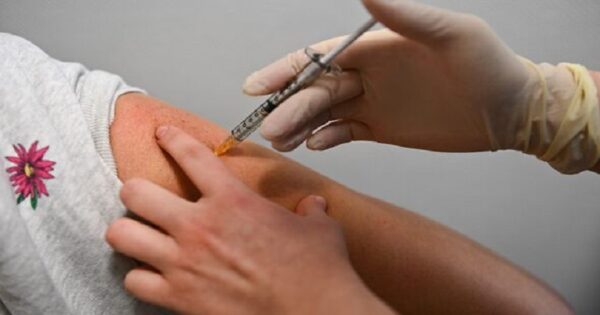
How to stop monkeypox? WHO expert lists key measures
The monkeypox virus has been detected in around 30 countries where the infection is not endemic, in what is the greatest epidemic of the virus. More than 780 instances of the virus have been confirmed or suspected, most of which have occurred in Europe.
As the number of cases climbs, the WHO has published additional guidelines and procedures to prevent the virus from spreading. Dr Maria Van Kerkhove, a WHO epidemiologist, offered a list of necessary tactics to halt monkeypox after analysing the virus epidemiology, sources of infection, and transmission patterns.
The monkeypox virus has been detected in around 30 countries where the infection is not endemic, in what is the greatest epidemic of the virus. More than 780 instances of the virus have been confirmed or suspected, most of which have occurred in Europe.
As the number of cases climbs, the WHO has published new guidelines and procedures to prevent the virus from spreading. Dr Maria Van Kerkhove, a WHO epidemiologist, compiled a list of critical approaches to eradicate monkeypox after studying the virus’s epidemiology, sources of infection, and transmission patterns.
Frontline staff, according to Dr Maria Van Kerkhove, must be protected because they are the ones who work on the ground and provide direct services to the public. “It’s vital to provide them with the most up-to-date information and the appropriate personal protective equipment. As part of the virus’s countermeasures, antivirals and immunizations should be offered to those who are most at risk in an equal manner.” Dr Kerkhove believes so.
Because it is critical to understand what monkeypox is, WHO convenes a research and development meeting next week to address everything from epidemiology to diagnostics, treatments, and immunisations.
While there have been no verified cases in India, a 5-year-old girl’s sample was found in Ghaziabad for monkeypox testing. Meanwhile, a genetic study of recent monkeypox cases in the United States has shown two unique strains. Although many of the cases in the United States were caused by the same strain as recent cases in Europe, federal health officials said that a few tests show a different strain.
Will monkeypox cause a Covid-like pandemic?
While US President Joe Biden has expressed alarm over the unexpected increase in instances of monkeypox, leading US health experts have stated that it would not result in a global pandemic similar to Covid-19.
While monkeypox cases are troubling, Dr Faheem Younus, Vice President and Chief Quality Officer at the University of Maryland Upper Chesapeake Health, stated there is no possibility of a Covid-like pandemic. He went on to say that, unlike SARS-CoV-2, the monkeypox virus is not new (the virus that causes Covid-19).
Monkeypox has been known to the globe for decades, and scientists have a thorough grasp of the disease, which belongs to the same virus family as smallpox. According to Dr Faheem, the monkeypox virus is usually not fatal and is less contagious than the coronavirus.
The fact that there is a vaccine for the disease is reassuring, as opposed to Covid-19, which was impervious to earlier vaccines and took the world almost a year to find a therapy for.
President Biden, who is now in Japan, soothed fears by assuring that the viral infection would not reach Covid-19 levels. Nearly 100 instances of the virus, which is mainly found in West Africa, have been documented in the United States, the United Kingdom, and Europe. “I just don’t think it gets to the kind of worry that COVID-19 generated,” Biden remarked.
Biden stated that the smallpox vaccine is effective against monkeypox. “I believe we have enough to deal with the potential of a problem,” Biden said when asked if the US has enough of the vaccine to deal with the monkeypox outbreak.
According to a top WHO consultant, the unusual monkeypox epidemic in industrialised countries has been defined as “a random event” that looks to have been caused by sexual activity at two recent raves in Europe. According to Dr David Heymann, former head of WHO’s emergency section, the leading idea to explain the disease’s spread is sexual transmission at raves hosted in Spain and Belgium.
“We know monkeypox can spread when people come into close contact with an infected person’s lesions, and it appears that sexual interaction has now exacerbated that transmission,” Heymann added. There have more than 90 cases of monkeypox in a dozen countries, including Canada, Spain, Israel, France, Switzerland, the United States, and Australia.
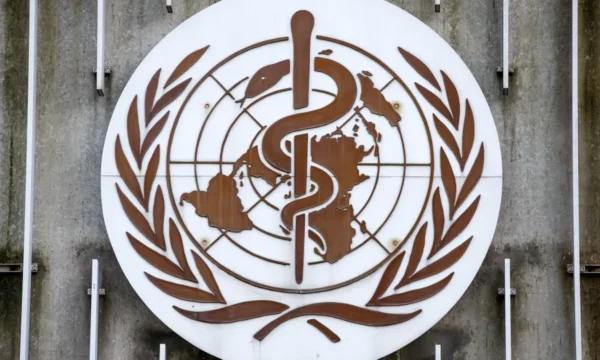
No evidence monkeypox virus has mutated, says WHO: Key developments
More than 100 confirmed or probable illnesses have been reported in more than 20 countries where monkeypox is not endemic, predominantly in Europe.
For the time being, the virus’s cases are primarily centred in the United Kingdom and Spain, even though the virus, which was initially discovered in central Africa, is spreading across the continent.
The latest news on the monkeypox outbreak is as follows:
There is no evidence that the monkeypox virus has mutated: WHO
On Monday, the World Health Organization said that there is no proof that the virus has mutated, even though it discussed the source and scope of the latest virus outbreak with its partners.
This virus is known for having fewer mutations, and genome sequencing will aid in the understanding of the present outbreak, according to a WHO official.
It went on to say that monkeypox outbreaks in non-endemic nations can be contained and that the virus can no longer be transmitted from person to person.
New virus threat doesn’t rise to the level of Covid-19: Biden
President Joe Biden has allayed fears over recent occurrences of monkeypox in Europe and the United States.
He stated that he did not believe that quarantine restriction were necessary. “I just don’t think it gets to the level of concern that existed with Covid-19,” he continued.
He stated that the smallpox vaccination is effective against monkeypox and that the US has a suitable vaccine to combat the spread of the disease.
According to experts, the risk of monkeypox spreading extensively is ‘very minimal’. The European Commission’s health agency
According to the EU health office, the likelihood of the rare disease monkeypox spreading widely among the general population is “extremely low.”
In a statement, Andrea Ammon, head of the European Centre for Clinical Prevention and Control, said, “Most of the present patients have mild disease signs, and the chance of transmission in the broader population is very low.”
“However, the risk of the virus spreading further through close contact, like during sexual activities among people who have several sexual partners, is significant,” she noted.
In Scotland, the first case of the new virus has been discovered.
After Scotland verified its first case of monkeypox, the UK government closely scrutinises the circumstances behind the virus’s propagation in the country.
“It’s basically a very unusual sickness. The implications don’t appear to be very catastrophic so far,” UK Prime Minister Boris Johnson said, “but we must keep an eye on it.”
According to the most recent data on Friday, England now has 20 confirmed cases.
Denmark reported its first case, which occurred in an adult male who had recently returned from a trip to Spain.
Belgium mandates a 21-day quarantine in Portugal due to 14 new cases.
Portugal’s health authorities verified 14 new cases of monkeypox on Monday, bringing the overall number of cases to 37.
Meanwhile, when four instances of monkeypox were reported last week, Belgium became the first country to make the 21-day quarantine mandatory for patients.
Symptoms and transmission of monkeypox
Fever, muscle aches, swollen lymph nodes, chills, tiredness, and a chickenpox-like rash on the hands and face that can spread to the rest of the body are all signs of monkeypox.
While there is no cure, the symptoms usually go away in two to four weeks.
Monkeypox is a viral infection that is usually seen in the west and central Africa. It was first discovered in the Democratic Republic of Congo in the 1970s.
In 11 African countries, the disease is considered endemic.
As of May 21, the WHO had received reports of 92 laboratory-confirmed monkeypox cases and 28 suspected cases from 12 non-endemic countries, including many European countries, the United States, Australia, and Canada.




